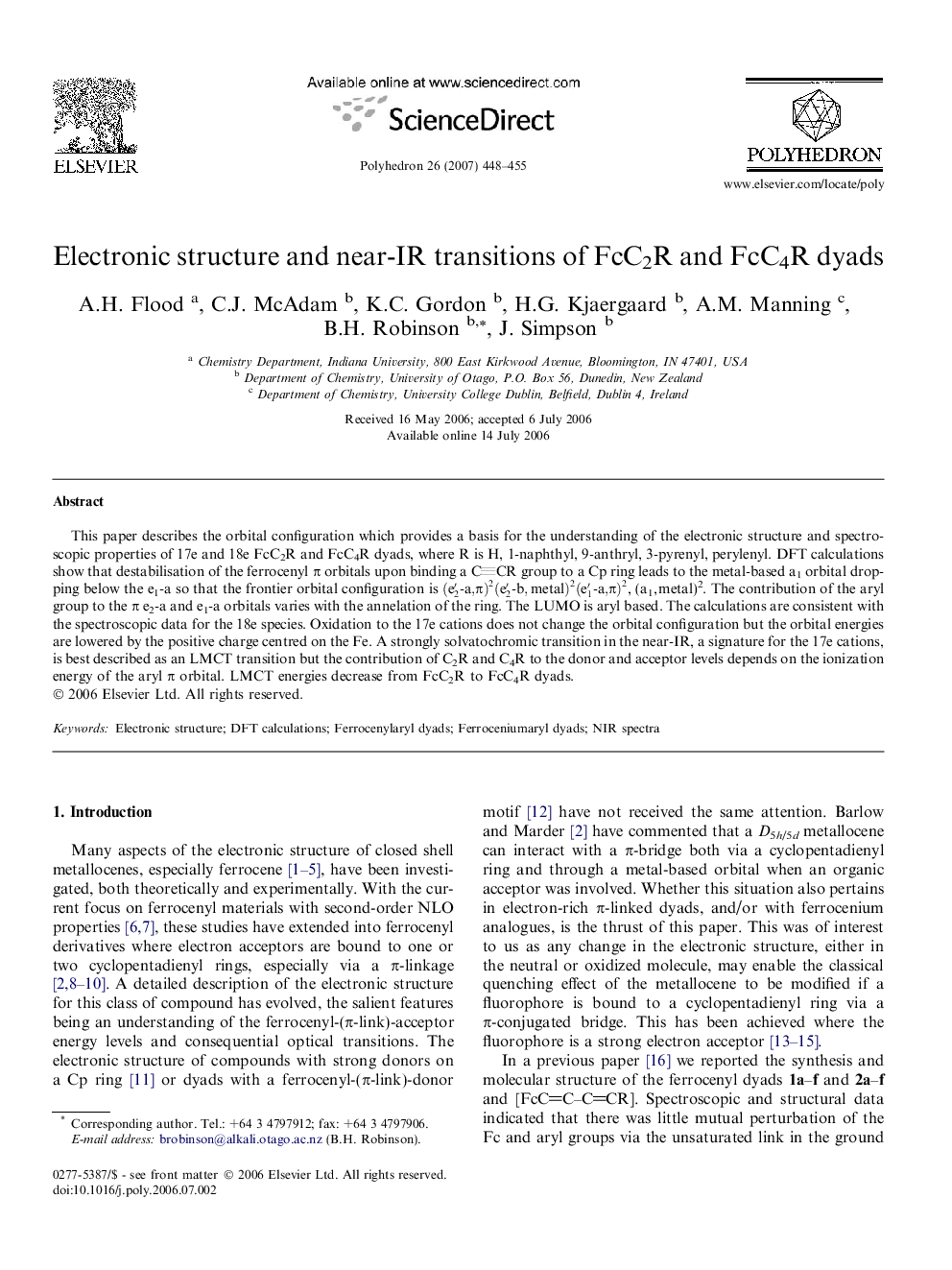| کد مقاله | کد نشریه | سال انتشار | مقاله انگلیسی | نسخه تمام متن |
|---|---|---|---|---|
| 1338868 | 979683 | 2007 | 8 صفحه PDF | دانلود رایگان |

This paper describes the orbital configuration which provides a basis for the understanding of the electronic structure and spectroscopic properties of 17e and 18e FcC2R and FcC4R dyads, where R is H, 1-naphthyl, 9-anthryl, 3-pyrenyl, perylenyl. DFT calculations show that destabilisation of the ferrocenyl π orbitals upon binding a CCR group to a Cp ring leads to the metal-based a1 orbital dropping below the e1-a so that the frontier orbital configuration is (e2′-a,π)2(e2′-b,metal)2(e1′-a,π)2, (a1, metal)2. The contribution of the aryl group to the π e2-a and e1-a orbitals varies with the annelation of the ring. The LUMO is aryl based. The calculations are consistent with the spectroscopic data for the 18e species. Oxidation to the 17e cations does not change the orbital configuration but the orbital energies are lowered by the positive charge centred on the Fe. A strongly solvatochromic transition in the near-IR, a signature for the 17e cations, is best described as an LMCT transition but the contribution of C2R and C4R to the donor and acceptor levels depends on the ionization energy of the aryl π orbital. LMCT energies decrease from FcC2R to FcC4R dyads.
DFT calculations show that the frontier orbital configuration of 17e and 18e FcC2R and FcC4R dyads, is (e2′-a,π)2(e2′-b,metal)2(e1′-a,π)2, (a1, metal)2. A strongly solvatochromic transition in the near-IR for 17e dyads is best described as an LMCT transition.Figure optionsDownload as PowerPoint slide
Journal: Polyhedron - Volume 26, Issue 2, 22 January 2007, Pages 448–455